Schupfnudeln (sometimes called fingernudeln) are German potato noodles, somewhat similar to Italian potato gnocchi. They are shaped into long finger-like dumplings, boiled and then typically pan-fried in butter to finish. These versatile dumplings can be enjoyed either savory or sweet.
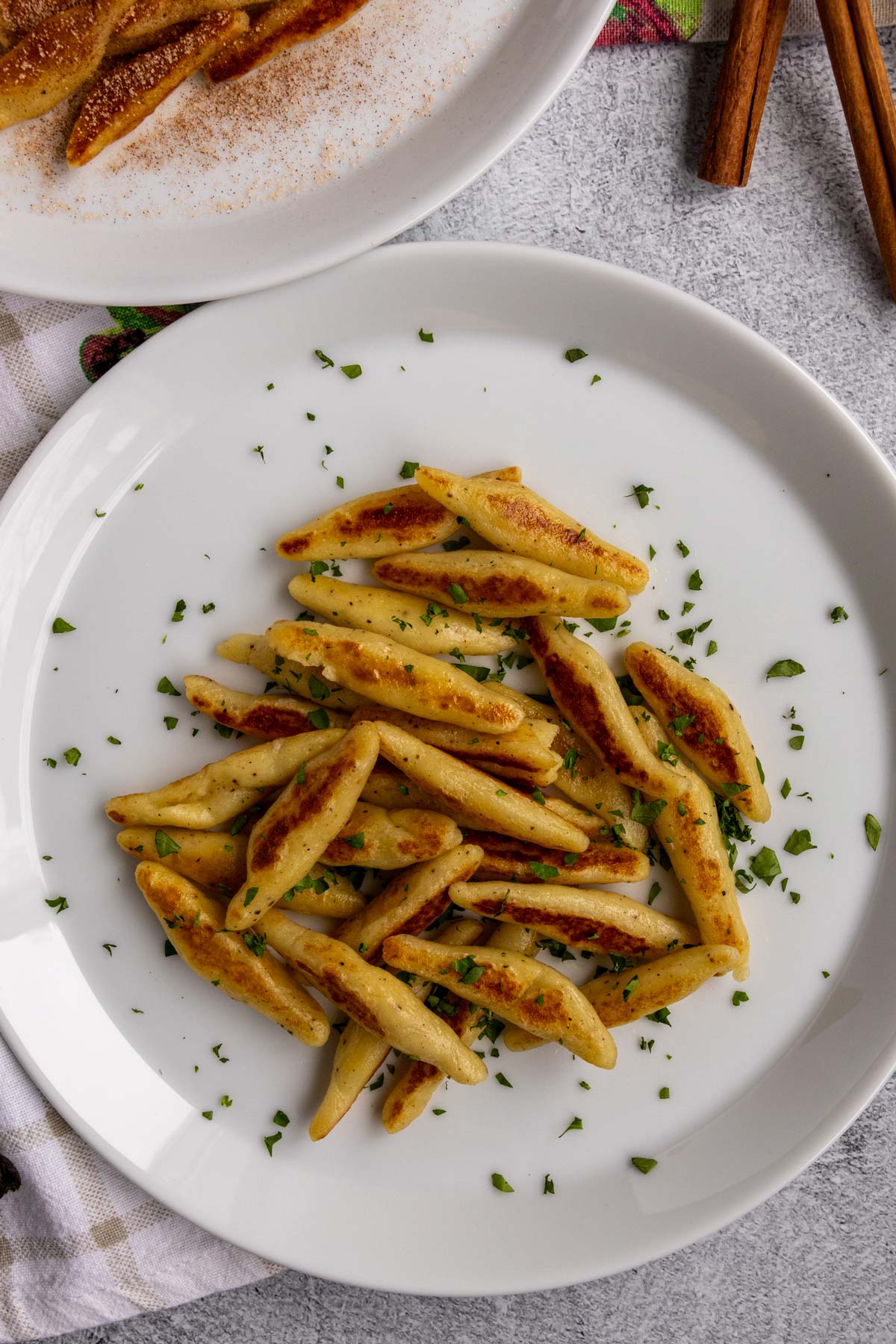
Schupfnudeln are thick potato-based noodles with tapered ends. Similar to Italian potato gnocchi, these German potato noodles are a popular side dish and main dish particularly in Southern Germany and even parts of Austria.
Schupfnudeln go by a variety of names depending on region. These include Fingernudeln, Bubenspitzle, Dradewixpfeiferl, Schopperla, and Erdepfebaunkerl (or Erdäpfel Baunkerl) among other naming variations.
The word schupf comes from schupfen which means "to push or throw." Pieces of dough are rolled between hands and then pushed or thrown off, hence the name. The other most popular name is Fingernudeln which means "finger noodles" and refers to the long finger-like shapes of the noodles.
In this recipe the potato noodles are quickly boiled, then finished in butter until the outside is crisp and golden. Meanwhile, the interior remains fluffy, soft and tender. Although preparing them this way is one of the most popular ways to serve fingernudeln, they are extremely versatile and can be served savory or sweet.
Ingredient notes
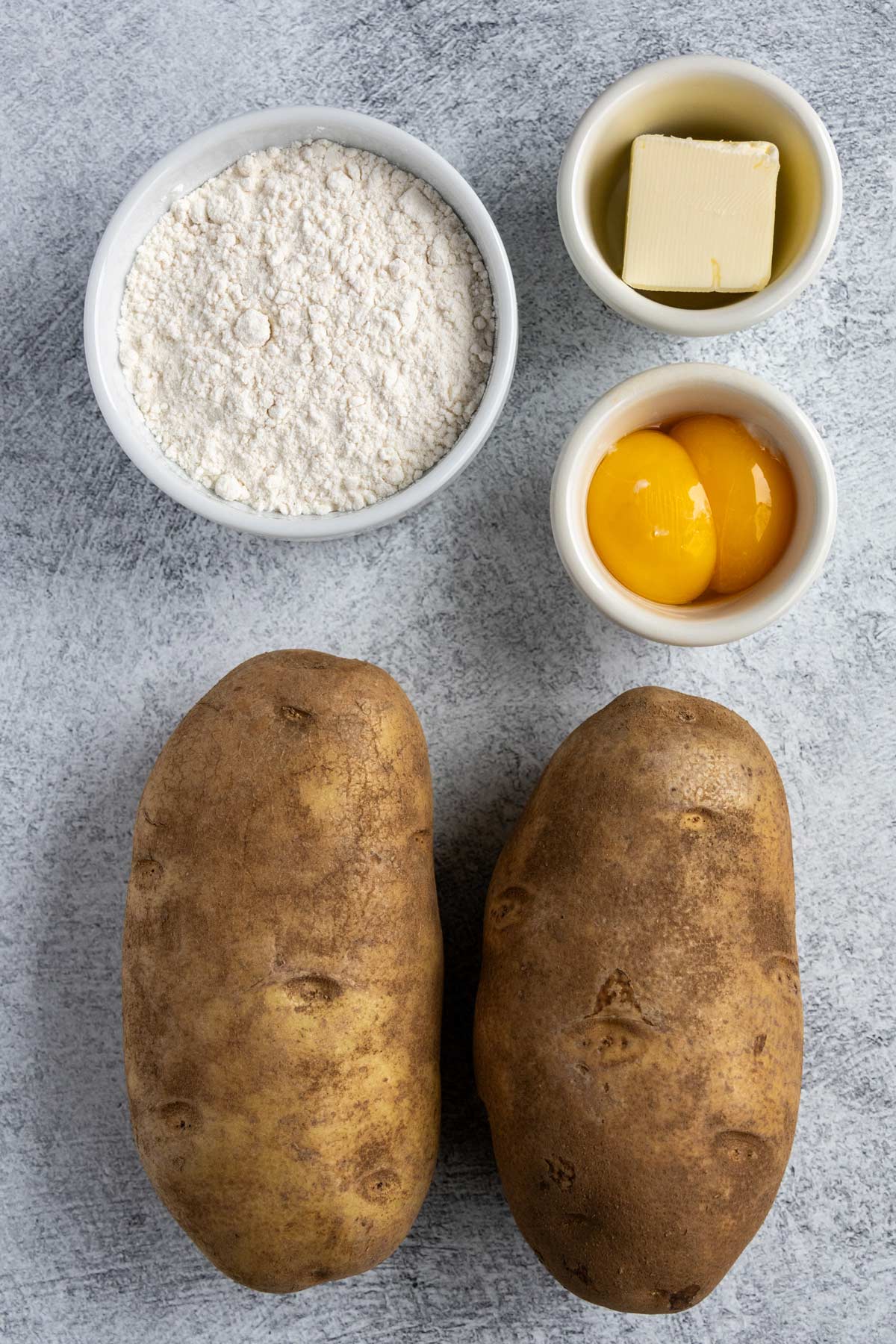
- Potatoes: Ideally, use starchy, floury potatoes such as russets for this recipe.
- Flour: The amount of flour you’ll need may range depending on the moisture content of the potatoes, the humidity in the air, and other factors. The key is to add just enough so that the dough doesn’t stick to your hands.
How to make it
Place whole, unpeeled potatoes in a pot and cover with cold water.

Bring to a boil, then lower the heat to maintain a simmer, cooking until the potatoes are tender.
Drain the potatoes. Let them rest for a few minutes to cool and allow some of the excess moisture to evaporate off them. Then, peel off the skin and place the potato flesh into a potato ricer or food mill. Process them into a smooth puree into a large mixing bowl.
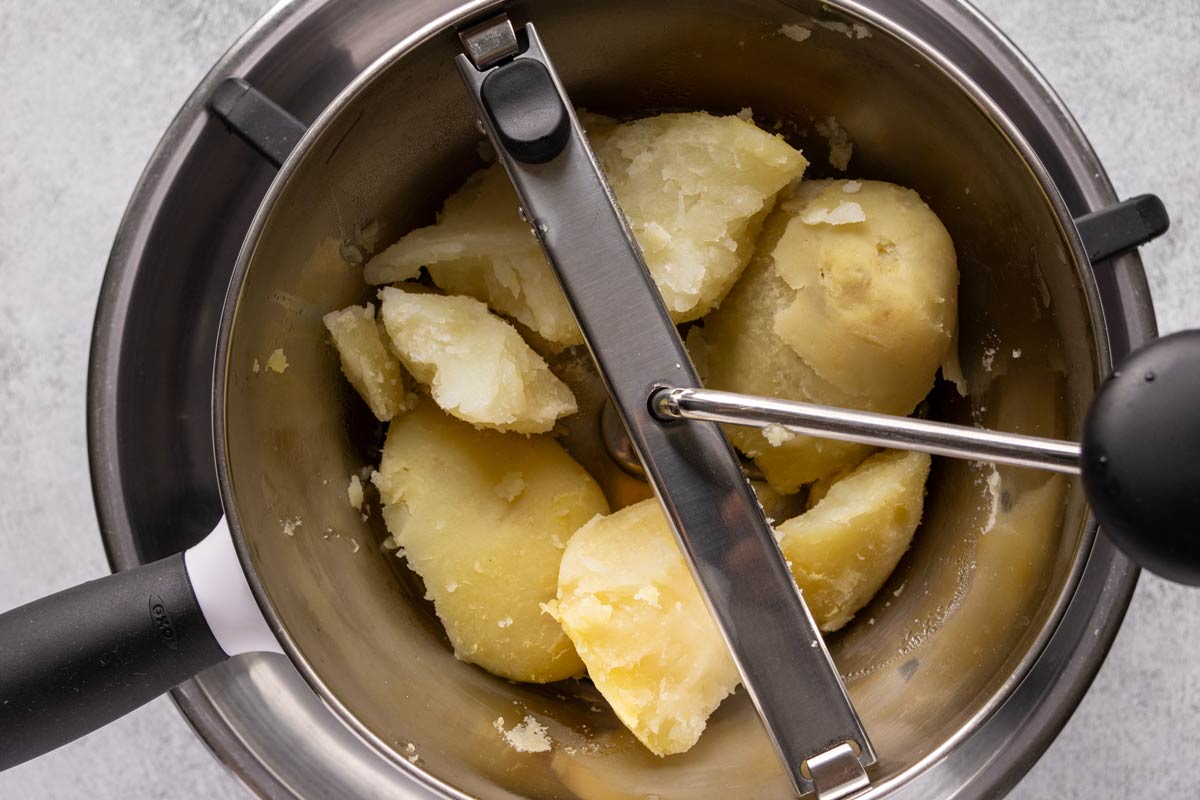
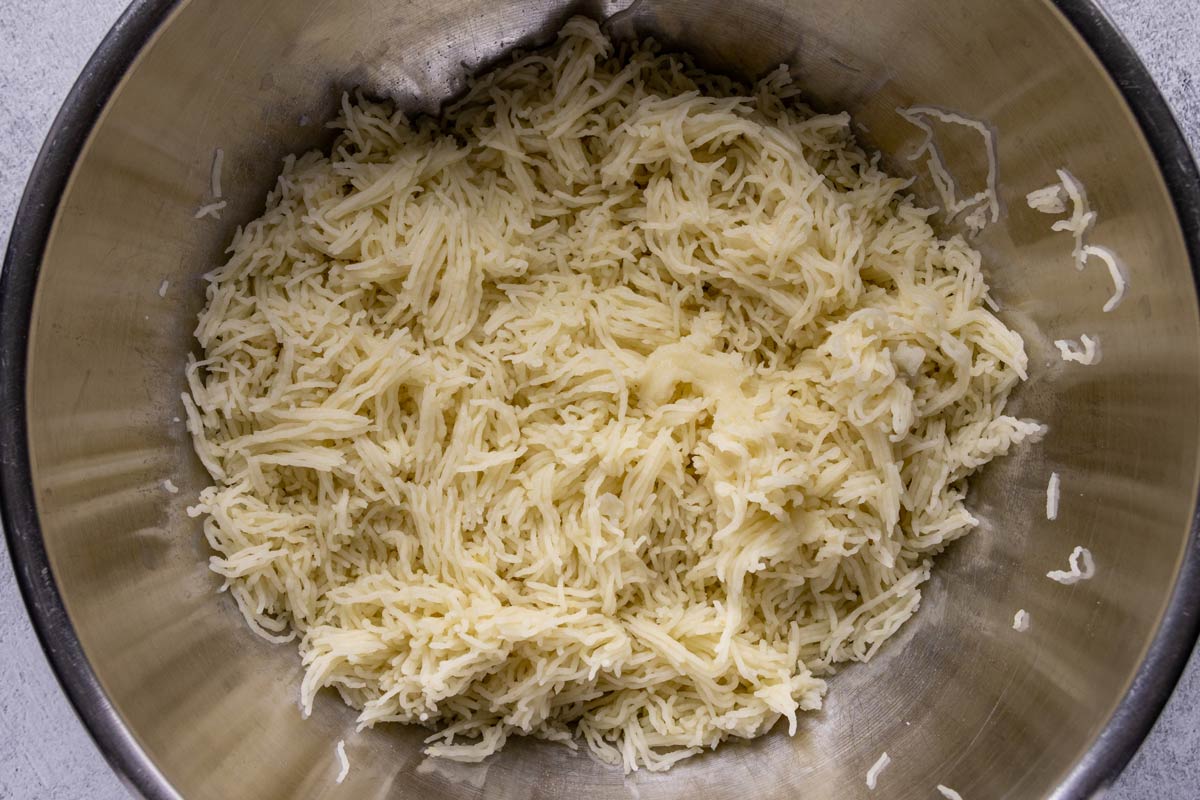
Add the flour, egg yolks, salt, pepper, and nutmeg. Gently knead together with your hands to form a smooth dough. If the dough is very sticky, add more flour as needed.


Dust 1 to 2 sheet pans or plastic cafeteria trays with flour. Depending on the size of your work surface, divide the dough into 4 to 6 pieces. If you have a smaller work surface, do 6 pieces so they are easier to roll out in limited space.

Lightly flour your work surface and hands as needed. Roll out one of the pieces into a long rope about ½-inch in diameter. Cut the rope into 1-inch long pieces, and then individually roll each piece on the board or between your hands to create tapered ends.
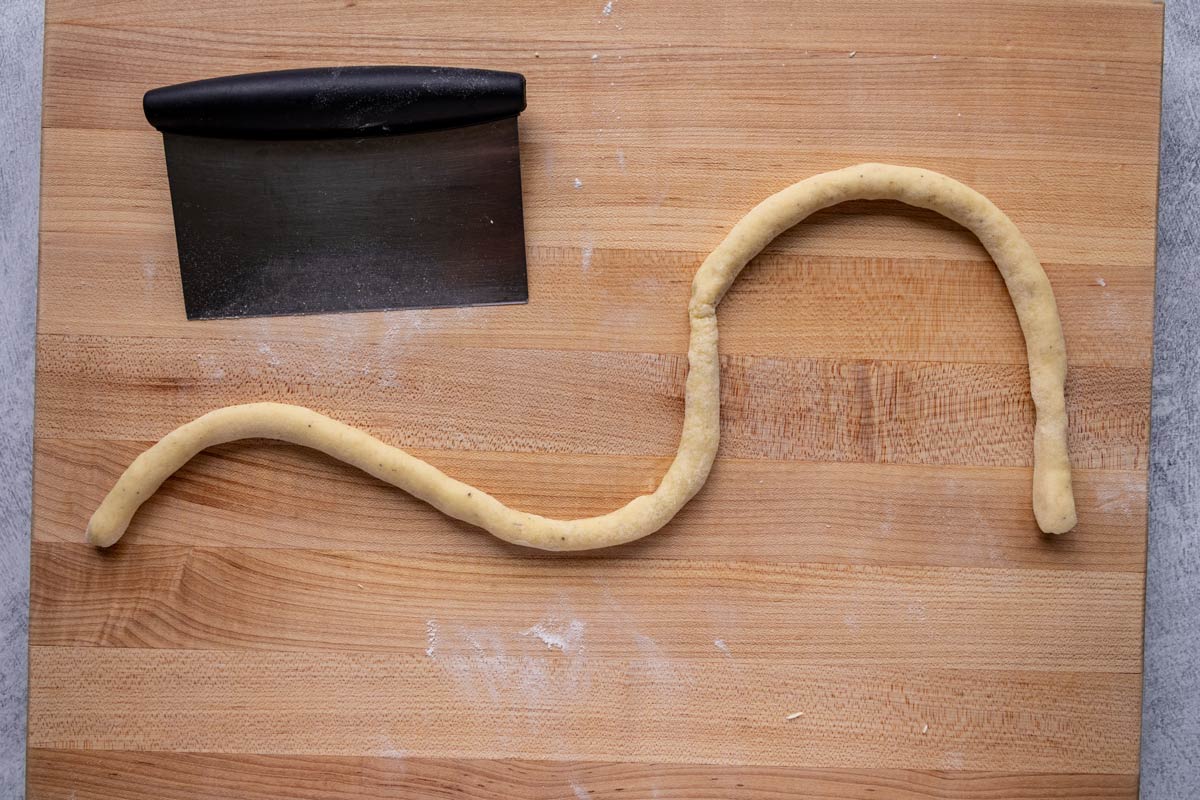
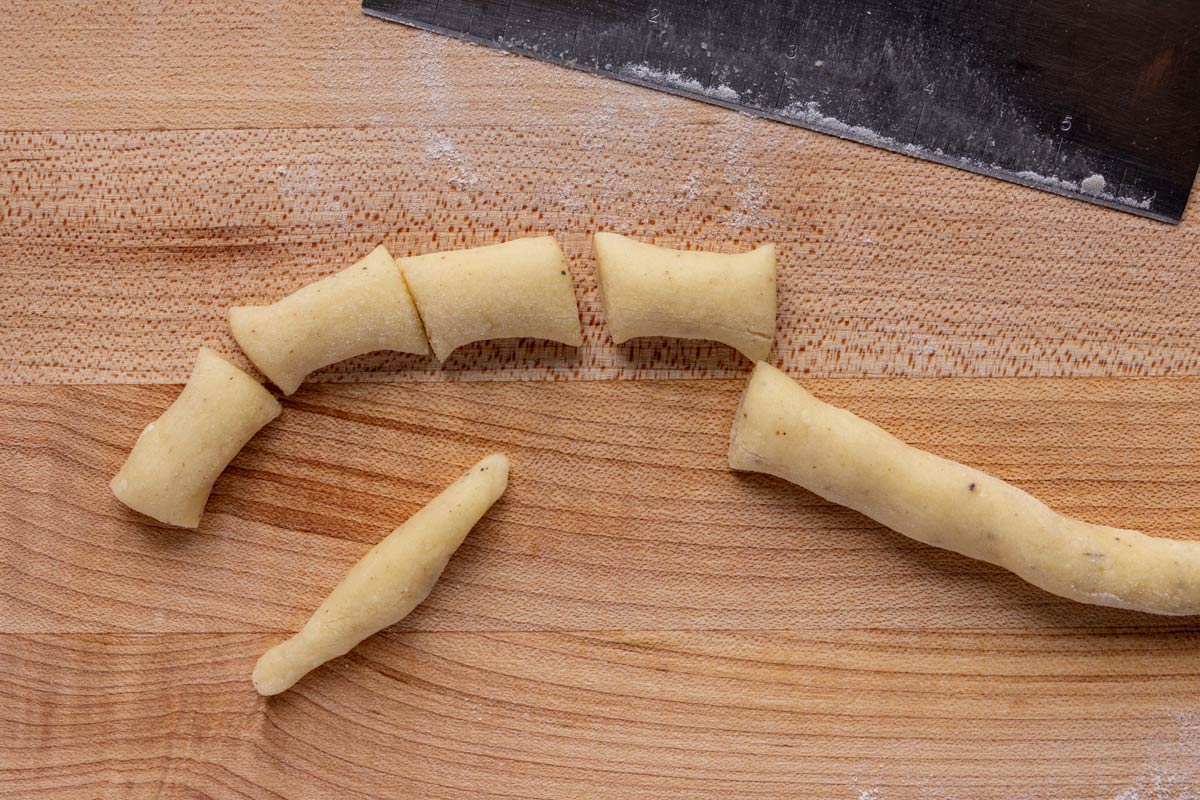
Place the assembled schupfnudeln on the prepared baking sheets, and repeat with the remaining dough. I yielded about 160 fingernudeln.

Bring a large pot of salted water to a boil, reduce the heat to maintain a gentle boil, and add the prepared potato noodles in batches, being careful not to overcrowd the pot.
Cook just until they all float to the surface, about 4 to 5 minutes. Remove with a spider skimmer or large slotted spoon to another sheet pan or cafeteria tray lined with a paper towel to soak up excess water. Repeat with the remaining noodles, cooking in batches, until they are all cooked and drained.

Add butter to a large nonstick skillet and melt over medium to medium-high heat (depending on the size of your skillet you may want to do this in batches). Add the boiled and strained schupfnudeln and saute, stirring occasionally, until golden brown, about 5 to 7 minutes.
Serve immediately topped with a dusting of chopped parsley (savory) or cinnamon sugar (sweet).
Please scroll to the bottom of the post for the full recipe (in a printable recipe card) including ingredient amounts and detailed instructions.

Expert tips
Schupfnudeln are a great way to use up leftover potatoes.
Ensure that your mashed potatoes are as smooth as possible, as lumps can negatively impact the consistency of the noodles. If you have a potato ricer or food mill, they would be great to use for this purpose. Use the grinding disc with the smallest holes.
Although they will boil faster if you peel and cube your potatoes, avoid doing this. It will add extra moisture to the potatoes and negatively impact the texture when you make the fingernudeln dough.
Overmixing the dough can cause it to get gummy and dense. Mix it just enough so it’s smooth, but don’t overmix.
Boil the noodles just long enough for them to rise to the surface, but don’t overcook because they’ll start to fall apart.

Storage tips
Schupfnudeln are best served immediately, but you could store leftovers for a couple days in the fridge if needed.
You can also freeze leftover boiled (but not yet pan-fried) potato noodles in a single layer (without them touching each other or else they’ll stick together) on a parchment paper-lined baking sheet. Once they are frozen, transfer to a freezer bag and store for up to a couple months. Then thaw in a single layer in the fridge before pan-frying in butter to serve.
Serving suggestions
As mentioned above, schupfnudeln can be served savory or sweet. As a savory option, you can serve them on their own, or as a side dish for pork, chicken, duck, or lamb.
For other savory preparations, you could serve them any way you might serve other potatoes or pasta. Additionally, you could fry them with sauerkraut or other veggies like mushrooms and peas, or even add bacon, cut up sausages, or other meats.
For a sweet variation, you could fry the noodles in butter and add sugar (or cinnamon sugar) halfway through cooking, or simply top with cinnamon sugar after pan-frying in the butter. Stewed berries or applesauce are good sweet accompaniments here.

Other recipes you may like
- Himmel und Erde (German Heaven and Earth Potatoes)
- Kasnocken (Austrian Spaetzle with Cheese and Onions)
- Leniwe (Polish Lazy Pierogi Dumplings)
- Gnocchi al Sagrantino all'Amatriciana
- Ricotta Cavatelli
- Pici (or Pinci) Pasta
- Jägerschnitzel (Schnitzel with Mushroom Gravy)
Tried this recipe? Please leave a star ⭐️⭐️⭐️⭐️⭐️ rating in the recipe card below and/or a review in the comments section further down the page. You can also follow me on social media on Facebook, Instagram, and Pinterest!
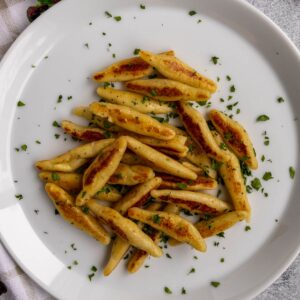
Schupfnudeln (German Potato Noodles)
Ingredients
- 680 grams (1 ½ pounds) russet potatoes (about 2 large potatoes)
- 100 grams (¾ cup) all-purpose flour or as needed
- 2 large egg yolks
- 2 teaspoons kosher salt
- ¼ teaspoon ground black pepper
- ¼ teaspoon ground nutmeg
- 30 grams (2 tablespoons) unsalted butter or as needed
- Fresh parsley chopped (optional, for savory)
- Cinnamon sugar (optional, for sweet)
Instructions
- Place the whole, unpeeled potatoes in a medium pot and cover with cold water. Bring to a boil, then lower the heat to maintain a simmer, cooking until the potatoes are tender, about 25 to 35 minutes (but this can range a lot based on the size of your potatoes). Use a fork to test them.
- Drain the potatoes and let them rest for a few minutes to cool and allow some of the excess moisture to evaporate off them. Peel off the skin and place the potato flesh into a potato ricer or food mill to process them into a smooth puree into a large mixing bowl (this is preferable to using a potato masher which can leave lumps).
- Add the flour, egg yolks, salt, pepper, and nutmeg, and gently knead together with your hands to form a smooth dough. Mix just until combined, don’t overmix. If the dough is very sticky, add a bit more flour. It shouldn’t stick to your hands.
- Dust 1 to 2 sheet pans or plastic cafeteria trays with flour. Depending on the size of your work surface, divide the dough into 4 to 6 pieces (if you have a smaller work surface, do 6 pieces so they are easier to roll out in limited space).
- Lightly flour your work surface and hands as needed, and roll out one of the pieces into a long rope about ½-inch in diameter. Cut the rope into 1-inch long pieces, and then individually roll each piece on the board or between your hands to create tapered ends.
- Place the assembled schupfnudeln on the prepared baking sheets, and repeat with the remaining dough.
- Bring a large pot of salted water to a boil, reduce the heat to maintain a gentle boil, and add the prepared potato noodles in batches, being careful not to overcrowd the pot. Cook just until they all float to the surface, about 4 to 5 minutes, and remove with a spider skimmer or large slotted spoon to another sheet pan or cafeteria tray lined with a paper towel to soak up excess water. Repeat with the remaining noodles, cooking in batches, until they are all cooked and drained.
- Add the butter to a large nonstick skillet and melt over medium to medium-high heat (depending on the size of your skillet you may want to do this in batches). Add the boiled and strained schupfnudeln and saute, stirring occasionally, until golden brown, about 5 to 7 minutes.
- Serve immediately topped with a dusting of chopped parsley (savory) or cinnamon sugar (sweet).
Notes
- The amount of flour you’ll need may range depending on the moisture content of the potatoes, the humidity in the air, and other factors. The key is to add just enough so that the dough doesn’t stick to your hands.
- Although they will boil faster if you peel and cube your potatoes, avoid doing this. It will add extra moisture to the potatoes and negatively impact the texture when you make the fingernudeln dough.
- Schupfnudeln are best served immediately, but you could store leftovers for a couple days in the fridge if needed.
- You can also freeze leftover boiled (but not yet pan-fried) potato noodles in a single layer (without them touching each other or else they’ll stick together) on a parchment paper-lined baking sheet. Once they are frozen, transfer to a freezer bag and store for up to a couple months. Then thaw in a single layer in the fridge before pan-frying in butter to serve.
Nutrition
*All nutritional information is based on third-party calculations and should be considered estimates. Actual nutritional content will vary with brands used, measuring methods, portion sizes and more.*




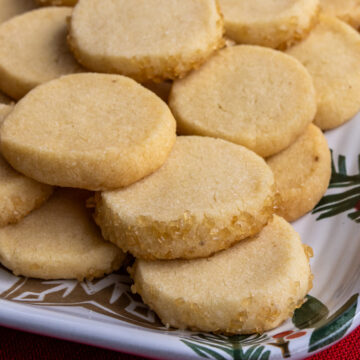
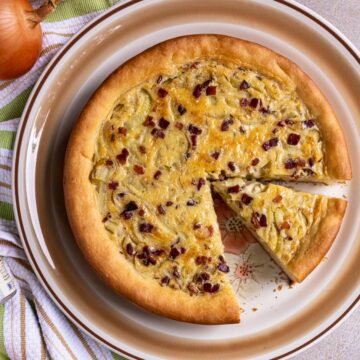
Comments
No Comments